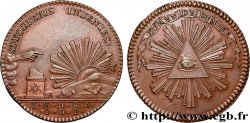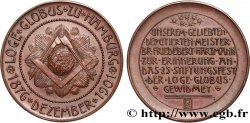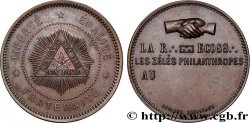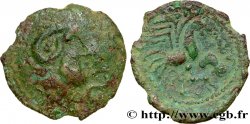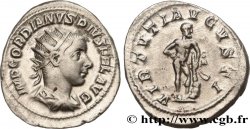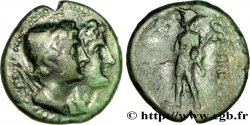Zurück 1/1
fjt_1017762 - FRANC-MAÇONNERIE - PARIS BONAPARTE 1852
170.00 €
Menge
In den Warenkorb

Type : BONAPARTE
Datum: 1852
Metall : vergoldetes Kupfer
Durchmesser : 25 mm
Stempelstellung : 12 h.
Gewicht : 5,74 g.
Rand lisse
Punze : sans poinçon
Kommentare zum Erhaltungszustand:
Patine hétérogène avec des traces de manipulation et points d’oxydation. Quelques coups et rayures
N° im Nachschlagewerk :
Vorderseite
Titulatur der Vorderseite (RECTANGLE REPRÉSENTANT UN PLAN SIMPLIFIÉ D’UNE LOGE) BONAPARTE / FONDEE EN 5852.
Beschreibung Vorderseite Abeille.
Rückseite
Titulatur der Rückseite JETON DE PRESENCE ***.
Beschreibung Rückseite Equerre et compas entrecroisés et entrelacés avec une couronne d’acacia, autour d’un G.
Kommentare
Loge de la famille impériale comptant 160 membres regroupant alors Jérôme Napoléon Bonaparte, Charles Bonaparte mais aussi les rois de Danemark et de Suède ainsi que des diplomates du monde entier. Marc Labouret nous indique que la loge repasse à 65 membres en 1862 et devient la loge de la France maçonnique. Puis s’éteindra en 1871. Marc Labouret précise à juste titre que sous la première phase du Second Empire, la Franc-maçonnerie est contrainte à la soumission, c’est la raison pour laquelle de nombreuses loges fermes. Dès 1860, les loges républicaines fleurissent à nouveau.
Lodge of the imperial family with 160 members, including Jérôme Napoléon Bonaparte, Charles Bonaparte, but also the kings of Denmark and Sweden, as well as diplomats from around the world. Marc Labouret tells us that the lodge returned to 65 members in 1862 and became the lodge of Masonic France. Then it died out in 1871. Marc Labouret rightly points out that during the first phase of the Second Empire, Freemasonry was forced into submission, which is why many lodges closed. From 1860, republican lodges flourished again.
Lodge of the imperial family with 160 members, including Jérôme Napoléon Bonaparte, Charles Bonaparte, but also the kings of Denmark and Sweden, as well as diplomats from around the world. Marc Labouret tells us that the lodge returned to 65 members in 1862 and became the lodge of Masonic France. Then it died out in 1871. Marc Labouret rightly points out that during the first phase of the Second Empire, Freemasonry was forced into submission, which is why many lodges closed. From 1860, republican lodges flourished again.








 Berichten über einen Fehler
Berichten über einen Fehler Die Seite drucken
Die Seite drucken Teilen meiner Auswahl
Teilen meiner Auswahl Stellen Sie eine Frage
Stellen Sie eine Frage Einlieferung/Verkauf
Einlieferung/Verkauf
 Details
Details